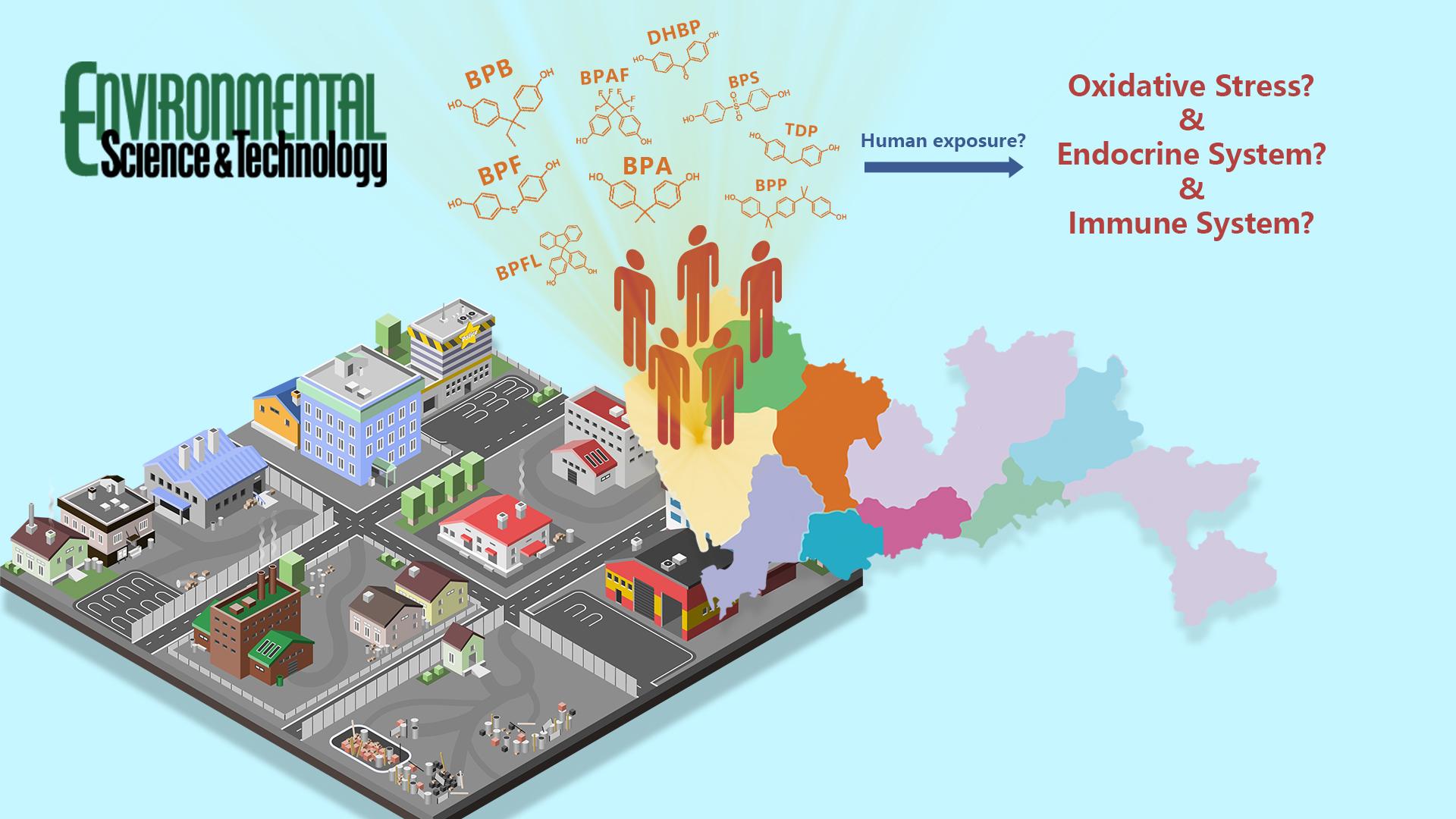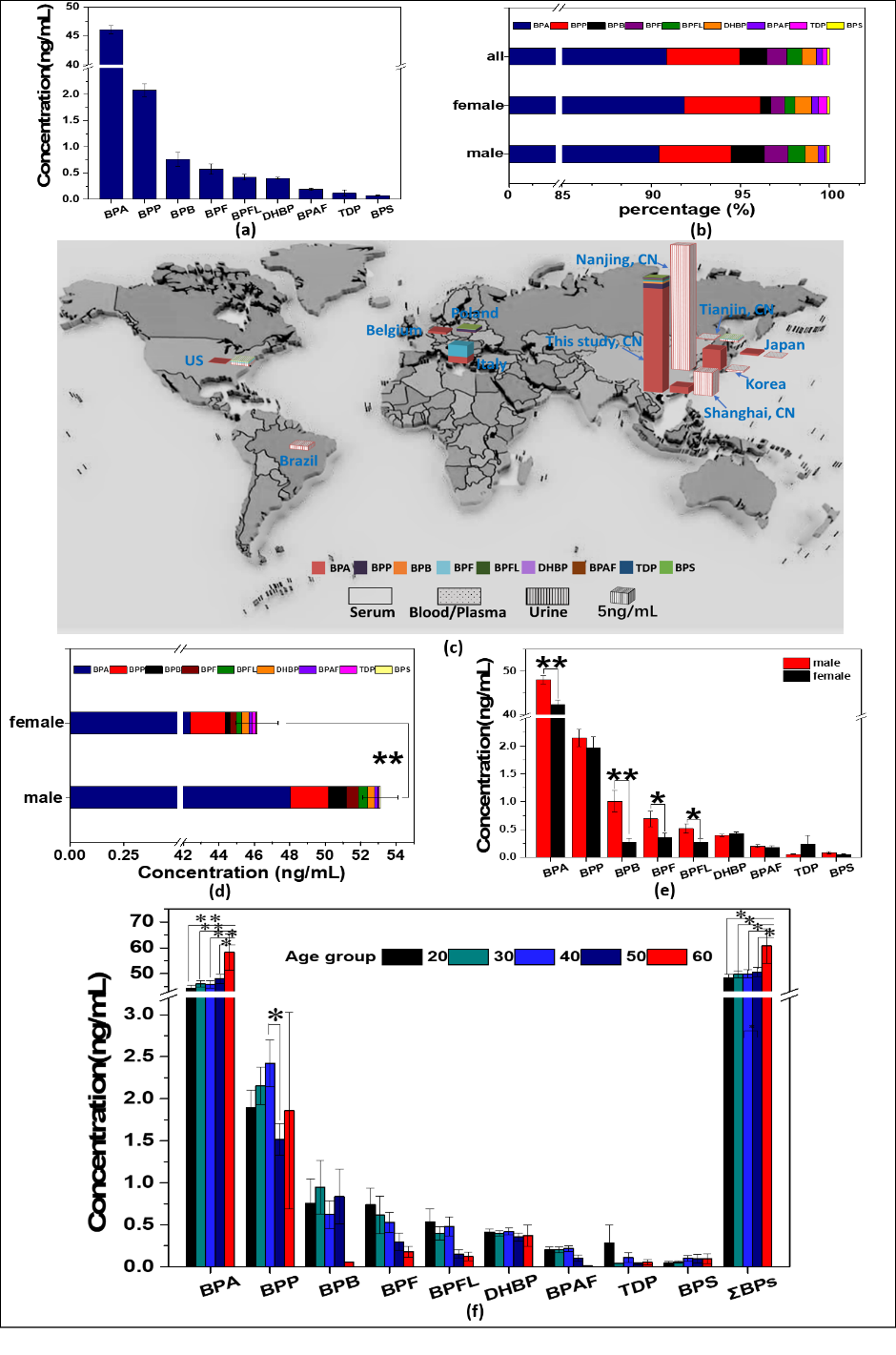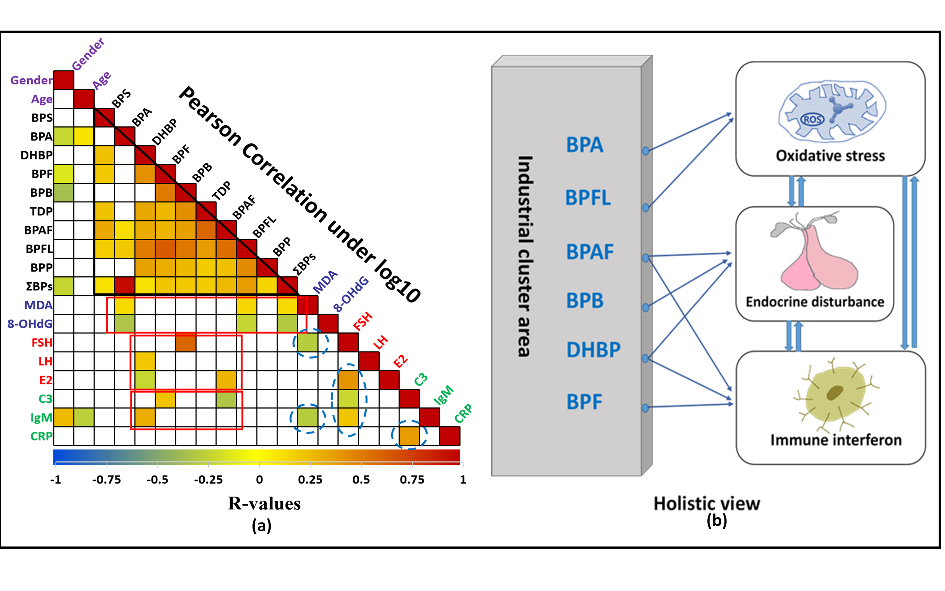SUSTech Yi Zheng's team publishes the latest progress of environmental pollution and human health on ES&T
Recently, Professor Yi Zheng's research group from the School of Environmental Sciences and Engineering (ESE) at the Southern University of Science and Technology (SUSTech), in collaboration with the Shenzhen Hospital of Southern Medical University, published a paper titled "Oxidative Stress, Endocrine Disturbance and Immune Interference in Humans Showed Relationships to Serum Bisphenol Concentrations in a Dense Industrial Area" in the Environmental Science & Technology which is a top journal in the field of environmental science. This study reported the internal exposure levels of nine bisphenols (BPs) in the serum of people who are white-collar workers in typical city-industrial areas, and its potential influences on human oxidative stress, endocrine disturbance, and immune interference.

The Ph.D. student Chuanzi Gao is the lead author of this paper, while Professor Yi Zheng and Research Assistant Professor Wenhui Qiu are the corresponding authors.
Bisphenol A (BPA) analogs, used in a range of products due to health concerns regarding BPA, have emerged as ubiquitous environmental contaminants worldwide. The Bao'an District is the densest industrial area in Shenzhen, with approximately 1600 separate industrial parks that mainly produce electronic, metal, daily necessities, and plastic products, which can create large amounts of BPs emissions. From the results, the mean concentrations of BPA, bisphenol P (BPP), BPB, bisphenol F (BPF), bisphenol FL (BPFL), 4,4′-dihydroxy-benzophenone (DHBP), bisphenol AF (BPAF), 4,4′-thiodiphenol (TDP) and bisphenol S (BPS) were 42.062, 2.083, 0.765, 0.578, 0.423, 0.402, 0.191, 0.120, and 0.071 ng/mL, respectively. The high concentration of BPs detected in the serum of ordinary people, especially BPA, indicates that greater attention should be focused on non-occupational exposure to BPs in dense industrial areas (Figure 1).

Figure 1. Internal exposure levels of 9 bisphenols in the serum of ordinary white-collar workers in Bao’an District
This study further analyzed the potential effects of 9 BPs on the human oxidative stress, endocrine, and immune systems. A correlation analysis showed that six BPs are the key BPs correlated with the expression of biomarkers for the three systems (Figure 2). BPs might induce oxidative stress, disturb the endocrine system and immune system, or cause disorders of homeostasis, and these changes eventually harm human health. Notably, BPs pollutants do not exist alone but coexist with many other pollutants, and their combined effects may have much more complicated influences on the human system.

Figure 2. Integral analysis of the correlations between bisphenols and three systems
The lead author is Chuanzi Gao (SUSTech and the University of Birmingham), and collaborators include Haihong He at the Shenzhen Hospital of Southern Medical University, Wenhui Qiu, Yi Zheng, Yuyang Chen, Shiyao Hu, and Xue Zhao at SUSTech.
This work was supported by the National Natural Science Foundation of China and Shenzhen Science and Technology Innovation Commission. Additional support was provided by the National Key R&D Program of China.
Original article – https://pubs.acs.org/doi/10.1021/acs.est.0c07587
